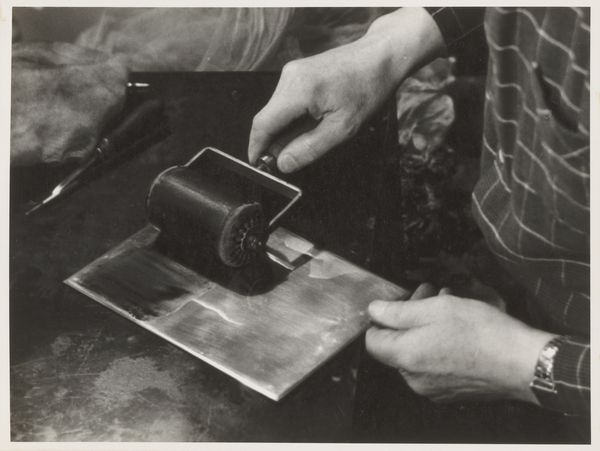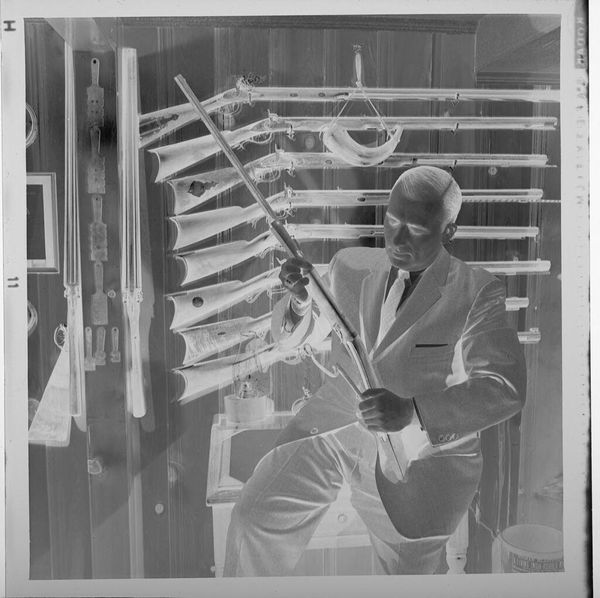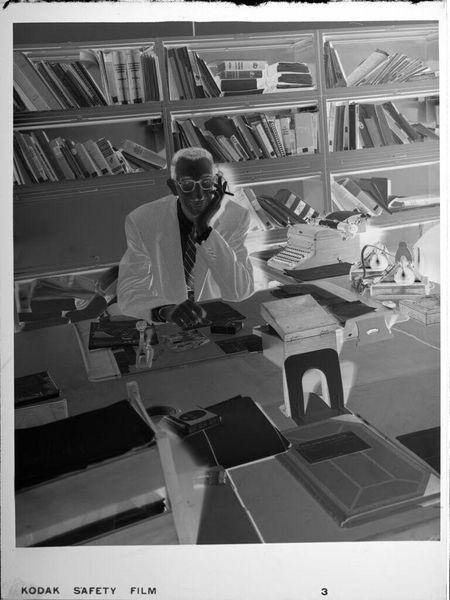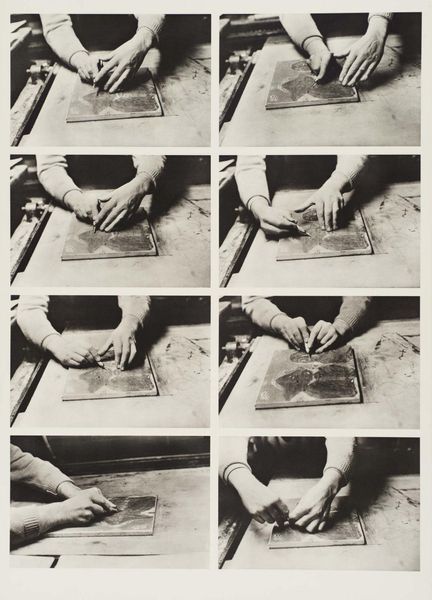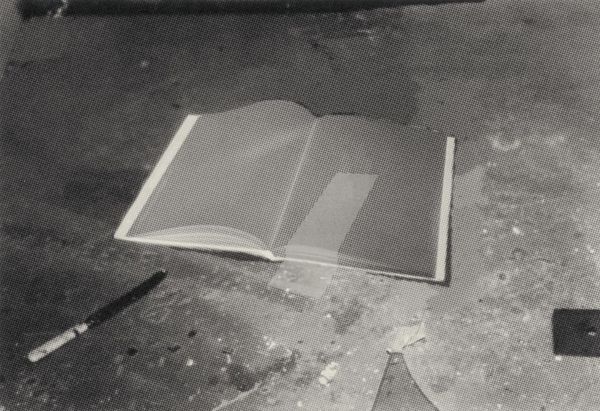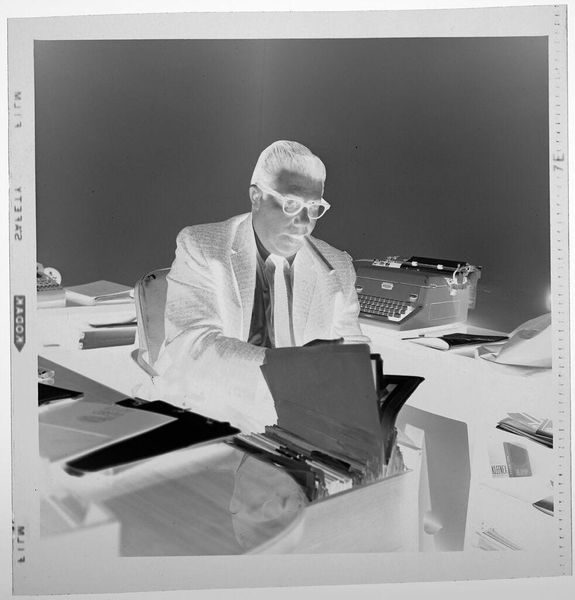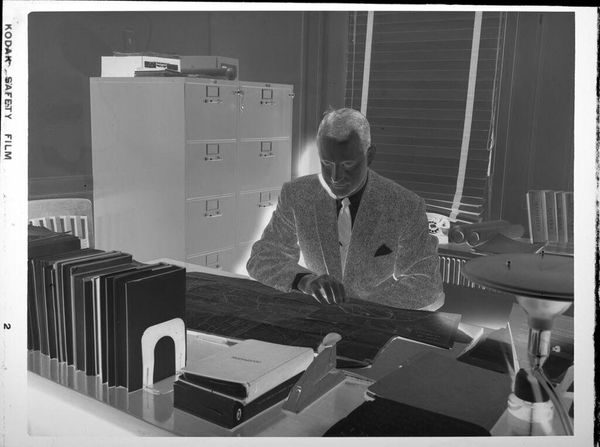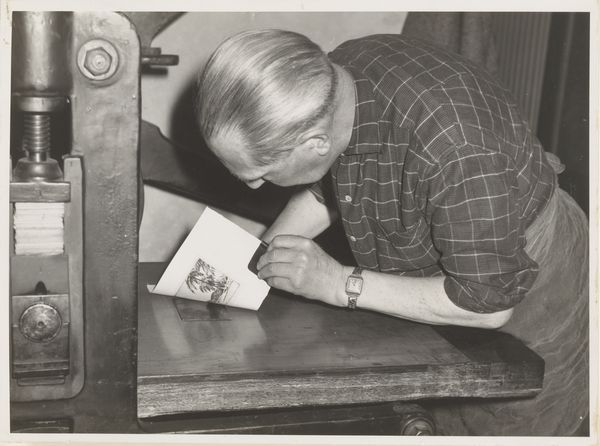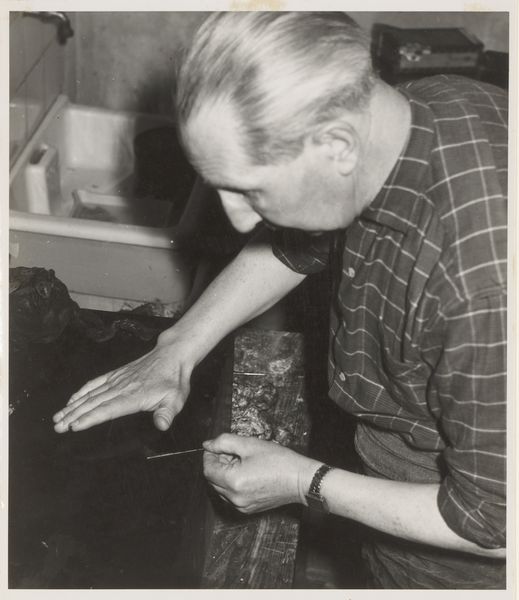
Dimensions: image: 170 x 229 mm
Copyright: © Estate of Albert Renger-Patzsch / DACS 2014 | CC-BY-NC-ND 4.0 DEED, Photo: Tate
Curator: Albert Renger-Patzsch's photograph, "Bookbinder Gilding," captures a moment of meticulous craft. It's an intimate view of a bookbinder at work. Editor: There's such a hushed reverence in this image. The hands poised over the gleaming surfaces, it feels almost like a sacred ritual. Curator: Indeed, the act of gilding transcends mere decoration. Gold, historically, symbolized knowledge, enlightenment, and the elevated status of the written word itself. Editor: And that's precisely where its power lies. The gilding isn't simply aesthetic; it's a marker of value, declaring these books as objects of importance, imbued with cultural capital. Curator: Renger-Patzsch, known for his "New Objectivity," strips away overt sentimentality. Yet, the inherent symbolism of gold persists, adding layers of meaning. Editor: Even within that stark aesthetic, we can feel the historical weight of craftsmanship—the time-honored methods of production now largely obsolete, replaced by mass production. Curator: It makes you consider the evolving status of knowledge and the book. Editor: A poignant reminder of what we risk losing in our modern era.
Comments
tate 6 months ago
⋮
http://www.tate.org.uk/art/artworks/renger-patzsch-bookbinder-gilding-p79955
Join the conversation
Join millions of artists and users on Artera today and experience the ultimate creative platform.
tate 6 months ago
⋮
Bookbinder Gilding is a black and white photograph documenting a stage in the traditional bookbinding process, whereby sheets of gold leaf are applied to the edges of bound books. The action appears to unfold within a workshop, though no specific location is discernable from the carefully-cropped photograph or from its title. The tight framing of the composition isolates the craftsman’s hands and omits his facial features. This purposeful cropping renders the man anonymous. Attention is instead focused on the bookbinder’s materials and tools: a gilder’s press, sheets of gold leaf, a brush and adhesive. The image is composed of a series of graphic lines created by the pressing machine, the books, the sheets of gold leaf and the diagonal lapels. These create a sense of linear geometry that contrasts with the circular adhesive bowl in the top-left corner. Rendered clearly and sharply, these details become so insistent as to form an ‘inner’ composition within the pictorial frame (Donald Kuspit, Albert Renger-Patzsch: Joy Before the Object, New York 1993, p.69). Renger-Patzsch used photography to isolate, frame and focus attention on details of the material world. By supplementing human vision in this way, his photographs encourage the viewer to ‘look at things from a new vantage point’ and take increased ‘joy’ in seeing the world of objects anew (Renger-Patzsch 1928, p.647).
